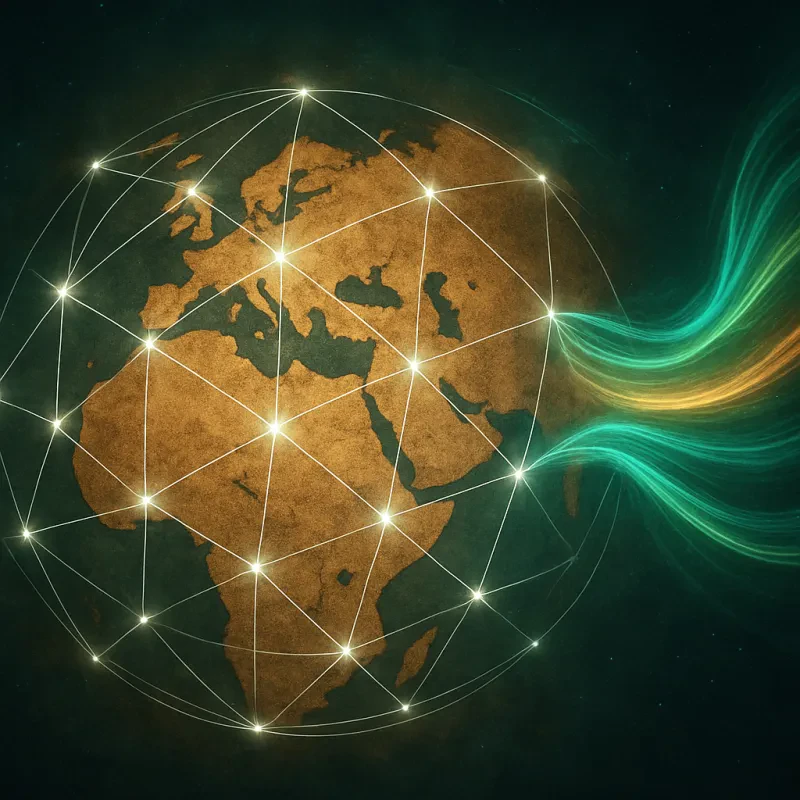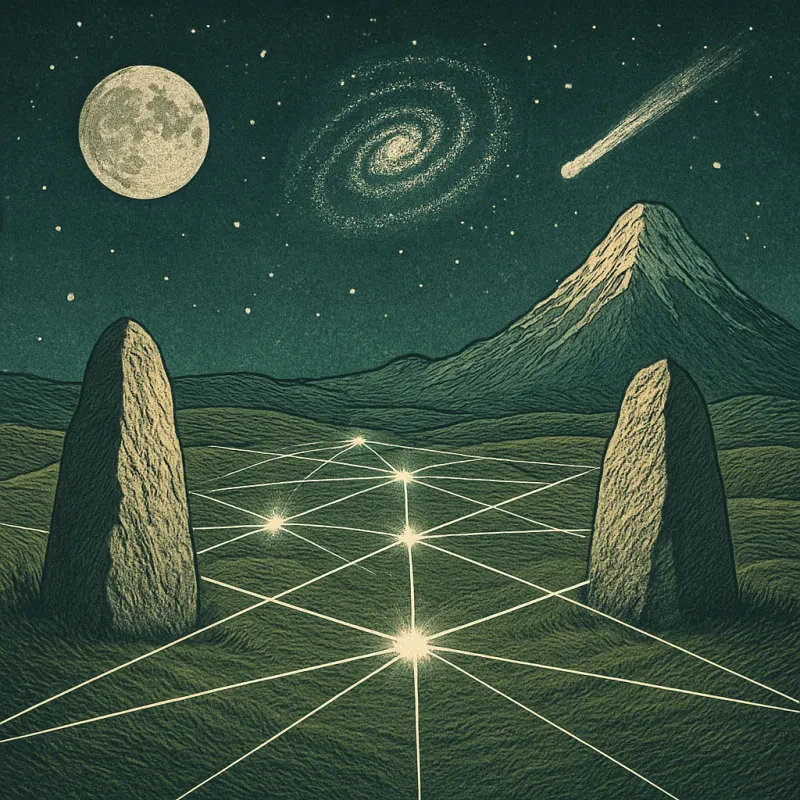Have you ever wandered through a place and felt there was something special about the land beneath your feet? Ley lines tap into that sensation. These imaginary lines, believed to connect ancient sites and landmarks, have fascinated people for generations. Ranging from stone circles to sacred groves, ley lines are thought to represent a network of energy that coursed through the Earth's surface long before modern mapping systems took shape.
The concept of ley lines started gaining popularity in the early 20th century, thanks to the work of Alfred Watkins, an English antiquarian. He noticed patterns in the locations of ancient sites, drawing lines between them on a map. He suggested that these sites were aligned purposefully, maybe even used for navigation or spiritual practices. His ideas sparked curiosity, leading many to explore how different cultures viewed these ancient pathways.
Across the globe, various civilizations have their own interpretations of ley lines. In China, for example, the concept aligns closely with feng shui, which emphasizes the flow of energy in spaces. Similarly, indigenous cultures often point to the importance of locations that hold spiritual significance, like sacred mountains or rivers. It’s fascinating to see how ley lines resonate with different traditions, weaving a rich tapestry of belief and meaning throughout history.
As we continue to uncover ancient sites and alignments, the story of ley lines grows even richer. Many people now incorporate the idea of these energy pathways into their spiritual practices or personal explorations of the land. Whether you’re a skeptic or a believer, it’s hard to ignore the intriguing connections that lay beneath our feet, waiting to be discovered and explored.
How Ley Lines Connect Different Cultures
Ley lines are more than just imaginary lines on a map—they're an intriguing concept that connects various cultures throughout history. These straight alignments, often thought to connect sacred sites, monuments, and natural features, have sparked interest in how they may represent shared beliefs or practices across different civilizations.
Many cultures have their own interpretations of ley lines. For instance, in the UK, ancient Britons believed these lines linked mystical sites like Stonehenge and Avebury. Meanwhile, in other parts of the world, such as China, similar ideas are found in feng shui practices, where the positioning of buildings and natural elements is crucial for harmony. This mix of reverence for the land shows how different groups can relate to the Earth in parallel ways.
The idea of ley lines goes beyond physical connections; they are often associated with energy flows and spiritual paths. Indigenous cultures, from North America to Australia, have long held beliefs about invisible energies running through the Earth, guiding their rituals and way of life. Exploring these connections can reveal how people have sought to understand their place in the universe in remarkably similar ways.
As we look at ley lines and their role in different cultures, we find a fascinating tapestry of human history. Whether it's aligning with celestial bodies or marking sacred territories, these paths offer insights into our ancestors’ lives and beliefs. The overlap in various traditions suggests a universal understanding of nature and spirituality, reminding us that despite our differences, we are all intertwined through the energies of the world around us.
Uncovering Myths Around Ley Lines
Ley lines have intrigued people for decades, but with that intrigue comes a whirlwind of myths. One common myth is that ley lines are magical or supernatural. While it’s true that many cultures attribute spiritual significance to these paths, there’s no concrete evidence to support the idea that they possess mystical powers. What many don’t realize is that ley lines are primarily about the connections between ancient sites, not a highway of energy.
Another myth suggests that ley lines create invisible patterns across the landscape, resembling a giant web. While it’s fascinating to think about, the alignment of these sites often occurs by chance more than any intentional design. Sure, you can find some interesting patterns if you look closely, but not everything aligns perfectly as some stories suggest. It’s a mix of human history and geographical coincidence.
People often believe that ley lines can only be found in certain areas, like the UK. In reality, they exist worldwide, spanning different cultures and geographies. From the ancient pyramids in Egypt to the temples in South America, these pathways reflect how various civilizations interacted with their landscape. So, whether you’re exploring the Earth’s mysteries or tracing the footsteps of our ancestors, remember that ley lines have a much broader reach than just a few locations.
Finally, there’s the idea that following ley lines could enhance your spiritual experience or bring about clarity. While some people might report feeling connected or enlightened after exploring these paths, these benefits stem more from personal reflection and the power of place, rather than the ley lines themselves. It’s all about what meaning you find in the journey, not just the lines on a map.
Finding Ley Lines in Your Area
First, it helps to gather some tools. A good map or even a GPS app can be super useful. You’ll want to identify old structures, megaliths, or historical sites in your region. Look up local history to see where these points of interest are located. Digital maps can be a great way to visualize potential ley line connections.
Once you’ve got your sites marked, it’s time to take a closer look. Use a ruler or string to draw lines between them on your map. Don’t worry about being precise! Just keep an eye out for any lines that seem to connect multiple locations. You might be surprised at what you find.
Don’t forget to explore your area! Sometimes ley lines are not just about finding specific points, but also about the journey between them. Take walks or hikes to observe the landscape. You might stumble upon other significant spots that aren't on your radar.
Lastly, keep an open mind. Ley lines can represent more than just physical connections; they can reflect the energy or stories of an area. Engaging with your surroundings while searching for these lines can open a whole new perspective on the history and culture of your locale.


